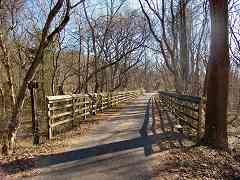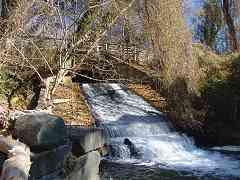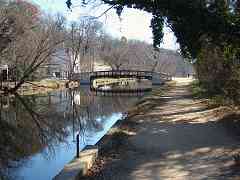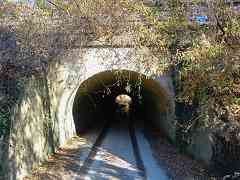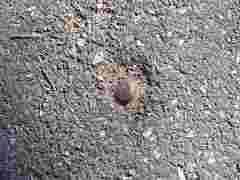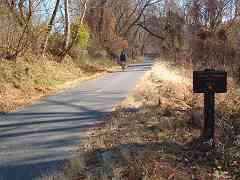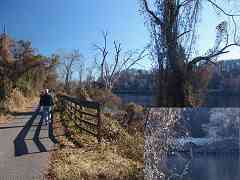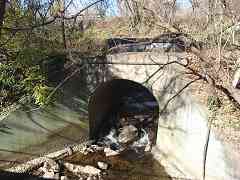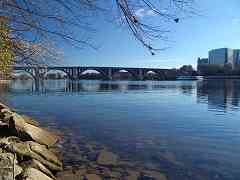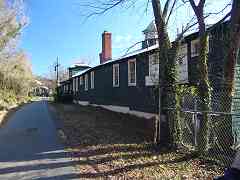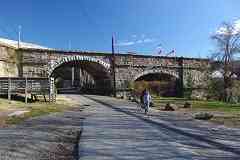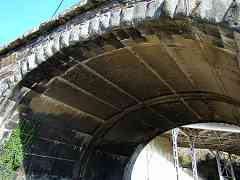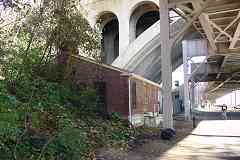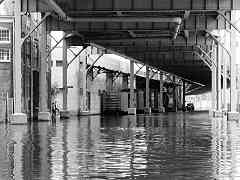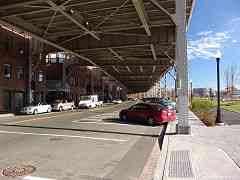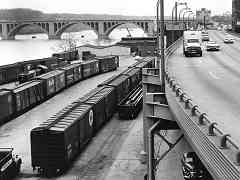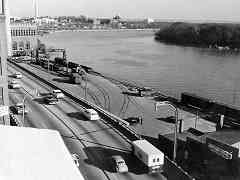|
At Fletcher's Cove, the Abner Cloud house, on a land parcel that dates to 1689, is
the oldest surviving building along the C&O canal. The photographer is standing
on the canal's towpath while paralleling unseen on the immediate right is
the Georgetown Branch's right-of-way.
In 1981 the Smithsonian Institution steamed from Georgetown to Fletcher's Cove
via the 1831-constructed John Bull locomotive; the event was noted as the
operation of the oldest self-propelled vehicle in the world.
Links:
1981,
in Smithsonian,
John Bull info at Wikipedia
| 